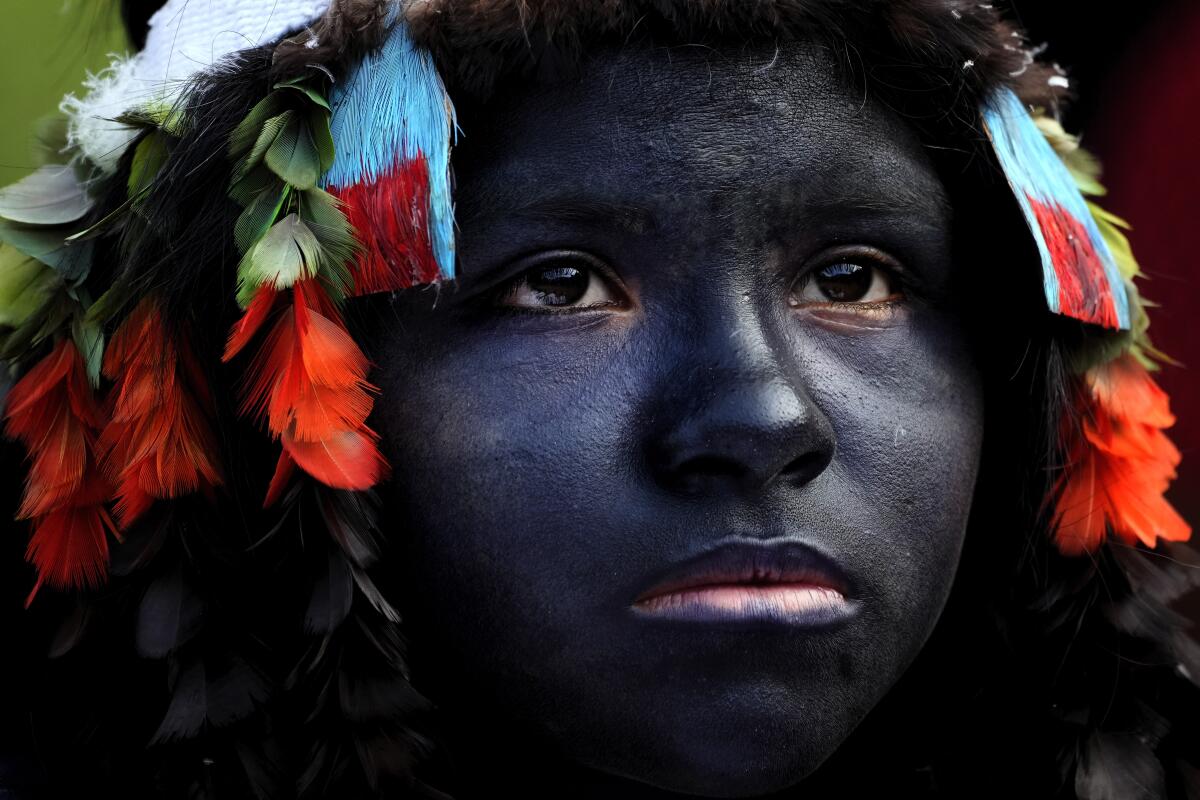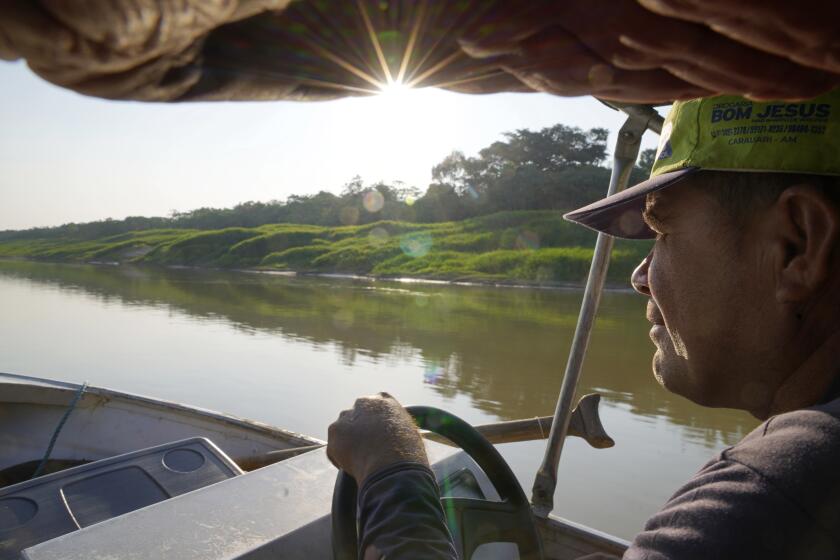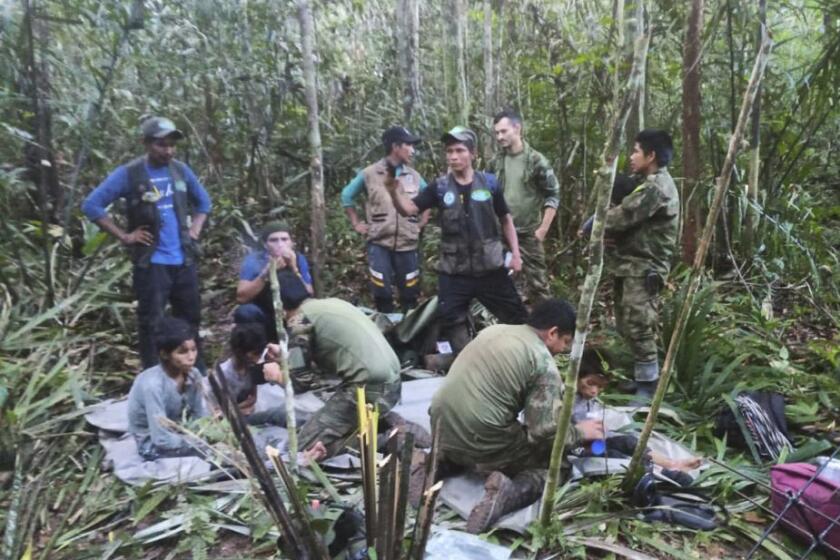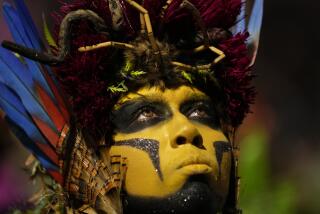An Amazon rainforest rite of passage in threatened territory

- Share via
ALTO RIO GUAMA INDIGENOUS TERRITORY, Brazil — The Indigenous adolescents danced in a circle under the thatched-roof hut from nearly dawn to dusk while parents looked on from the perimeter. Some of the adults smoked tobacco mixed with the wood from a local tree in Brazil’s Amazon rainforest.
The seemingly endless loop of the procession, taking place over six long days this month, was leaving some Tembé Tenehara youngsters with swollen and bandaged feet. They were receiving little to eat and spending each night sleeping in hammocks slung in the hut. But in the Alto Rio Guama territory, it is all part of a vital rite of passage known as “Wyra’whaw.”
Girls taking part in the coming-of-age ritual had already had their first period. Boys’ voices had begun to slip into lower registers. Upon the final day, the girls and boys would be viewed by the Teko-Haw village as women and men, and assume their roles leading the community into an uncertain future.
“We know of other ethnic [Indigenous] groups in Brazil that have already lost their culture, their tradition, their language. So we have this concern,” Sergio Muti Tembé, leader of the Tembé people in the territory, told the Associated Press. Indigenous people in the Brazilian Amazon customarily adopt their ethnic group’s name as their surname.
A Brazilian nonprofit has created a new model for land ownership that welcomes local people and scientists to collaborate in preserving the Amazon.
Their culture has been increasingly threatened over recent years. The Alto Rio Guama territory is a 1,081-square-mile triangle of preserved forest surrounded by severely logged landscape in the northeastern Amazon, home to 2,500 people of the Tembé, Timbira and Kaapor ethnicities.
But it has also been occupied by some 1,600 non-Indigenous settlers. Some of those invaders have been there for decades. Many log the territory’s trees or grow marijuana, according to public prosecutors in Para state.
The local Indigenous people already patrol and try to expel outsiders themselves. With limited capacity and authority, however, they have been eager for help. State and federal authorities last month put into motion a plan to remove them. The operation represents the first effort under President Luiz Inácio Lula da Silva to remove land-grabbers, following an initiative to remove illegal gold miners from the Yanomami people’s territory.
Authorities threatened forcible expulsion of settlers who failed to leave, and pledged to eliminate access roads and irregular installations, according to a prosecutors’ statement detailing plans. As of Monday, 90% of settlers had voluntarily departed, with rain-ravaged roads impeding the rest, according to a statement from the general secretariat of Brazil’s presidency.
Authorities in Colombia found four children who survived a plane crash 40 days ago and had been the subject of an intense search in the Amazon jungle.
“The expectation is that, by the end of the week, we can complete the total eviction,” Nilton Tubino, the operation’s coordinator, was quoted as saying in the statement.
Sergio Muti Tembé, the leader, said the government’s effort came not a moment too soon, and that his people are hopeful it will ensure the future of both their land and their customs.
On the second-to-last day of the Wyra’whaw ritual, mothers painted their children’s bodies with the juice of the genipap fruit. Within hours, it had dyed their skin black; girls were transformed from head to toe, while boys exhibited designs and an upside-down triangle across the lower half of their face, almost resembling a beard.
The following morning, each adorned adolescent was given a white headband with dangling feathers. Pairs of boys and girls locked arms as they skipped barefoot around villagers gathered in the circle’s center, and made their final approach to adulthood.
Biller reported from Rio de Janeiro. AP writer Mauricio Savarese contributed from Sao Paulo.
More to Read
Sign up for Essential California
The most important California stories and recommendations in your inbox every morning.
You may occasionally receive promotional content from the Los Angeles Times.















